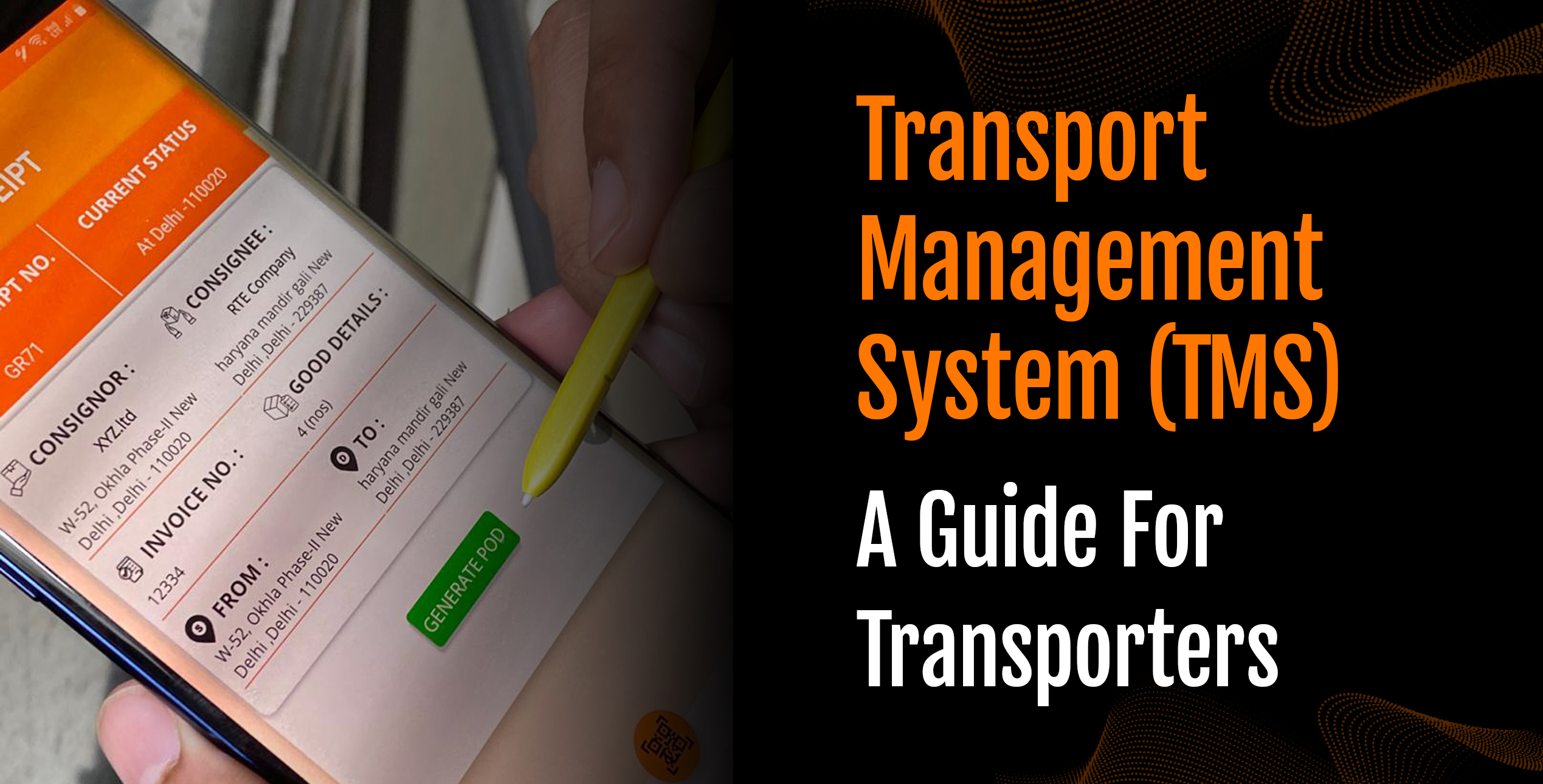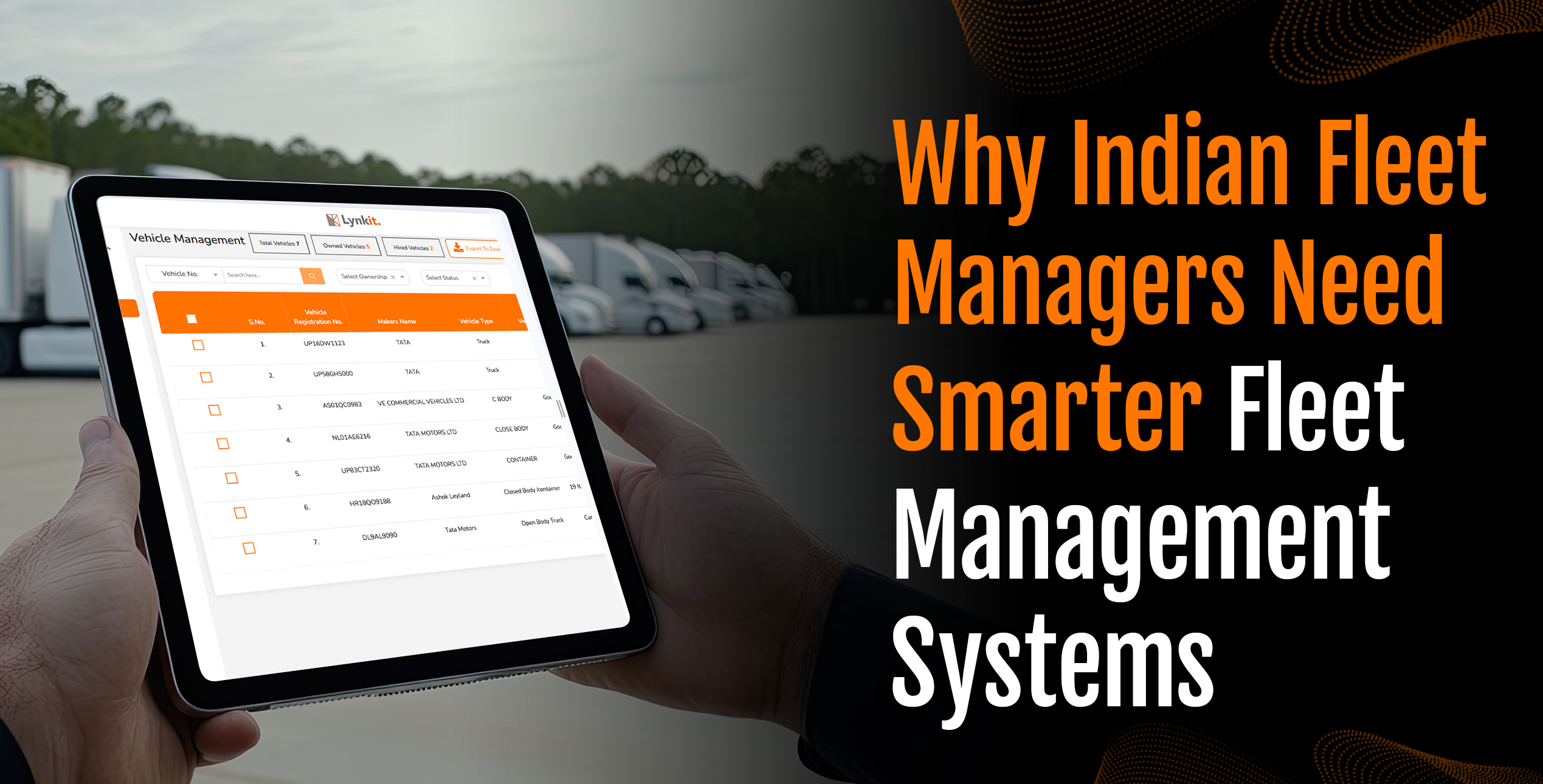Transporters in the logistics industry today face numerous challenges, from managing operational costs to ensuring timely deliveries. However, with a robust Transport Management System (TMS), transporters can streamline their operations and feel reassured about the efficiency of their processes.
This powerful tool can significantly address these challenges by optimizing various aspects of transportation operations. This blog explores the benefits of a Freight Management (TMS) for transporters, focusing on expense management, driver management, vehicle management, and more for transporters.
By understanding these benefits, transporters can enhance efficiency, reduce costs, and feel confident in the effectiveness of their operations.
Expense Management
Effective expense management is crucial for transporters to maintain profitability. A Transport Management System (TMS) helps by providing detailed insights into all transportation-related costs. Here’s how:
Cost Tracking and Reporting
A Freight Management System TMS offers a treasure trove of comprehensive cost-tracking and reporting features that enable transporters to unearth expenses related to fuel, maintenance, tolls, and more. By delving into this data, transporters can unearth areas of excessive spending and implement cost-saving measures.
Fuel Management
Fuel is a significant expense for any transportation company. A TMS can track fuel consumption and identify inefficient driving behaviors, such as excessive idling and harsh braking, contributing to higher fuel costs. By addressing these issues, transporters can reduce fuel consumption and save money.
Maintenance Scheduling
Regular maintenance is essential for keeping vehicles in optimal condition and preventing costly breakdowns. A TMS can schedule and track maintenance activities, ensuring all vehicles are serviced on time. This proactive approach minimizes downtime and extends the lifespan of the fleet.
Driver Management
Managing drivers effectively is key to ensuring smooth operations and maintaining high service standards. A TMS provides several tools to help with driver management:
Performance Monitoring
A TMS allows transporters to monitor driver performance through various metrics, such as delivery times, fuel efficiency, and route adherence. By evaluating these metrics, transporters can identify top-performing drivers and those needing additional training or support.
Compliance Management
Ensuring drivers comply with regulations and company policies is critical for safety and legal compliance. A TMS helps manage driver compliance by tracking driving hours, rest periods, and adherence to speed limits. This information helps prevent violations and enhances overall safety.
Training and Development
Continuous training and development are vital for maintaining a skilled and motivated workforce. A TMS can track training requirements and progress, ensuring that all drivers receive the necessary training to perform their duties effectively.
Vehicle Documents and Management
Managing vehicle documentation is a critical aspect of transportation operations. A TMS simplifies this process by digitizing and organizing all necessary documents:
Document Storage and Retrieval
A TMS provides a centralized repository for storing vehicle-related documents, such as registration papers, insurance certificates, and maintenance records. This digital storage ensures easy access and retrieval, reducing the risk of document loss and ensuring compliance with regulatory requirements.
Document Expiry Alerts
Keeping track of document expiry dates can be challenging. A TMS automatically alerts for upcoming expirations, ensuring all documents are renewed on time. This proactive approach prevents legal issues and avoids operational disruptions.
Compliance and Audits
A TMS helps transporters comply with various regulations by maintaining accurate and up-to-date records. Transporters can quickly retrieve the required documents during audits, simplifying the audit process and ensuring compliance.
Minimizing Document Loss
Document loss can lead to significant operational challenges and legal complications. A TMS helps minimize document loss through digital storage and robust data management:
Backup and Recovery: A TMS includes backup and recovery features that protect against data loss due to system failures or other unforeseen events. Regular backups ensure that documents can be restored quickly, minimizing disruptions to operations.
Digital Archiving: A TMS eliminates the risk of physical document loss by digitizing and securely storing documents. Digital archiving ensures that all essential documents are preserved and easily accessible when needed.
Electronic Proof of Delivery (ePOD)
The advent of electronic Proof of Delivery (ePOD) systems has revolutionized the way transporters operate, offering several advantages that are too good to ignore:
Real-Time Updates
ePOD systems provide real-time updates on delivery status, allowing transporters to monitor deliveries closely and address any issues promptly. This real-time visibility enhances operational efficiency and improves customer satisfaction.
Reduced Paperwork
ePOD eliminates the need for paper-based documentation, reducing administrative burdens and the risk of document loss. Digital records are easier to manage and can be accessed quickly for verification or auditing purposes.
Enhanced Accuracy
ePOD systems reduce errors associated with manual data entry, ensuring that delivery information is accurate and reliable. This accuracy helps prevent disputes and improves the overall reliability of the delivery process.
Request for Quotation (RFQ)
Managing RFQs efficiently is crucial for securing the best rates and services from carriers:
Automated RFQ Processes
A TMS automates the RFQ process, allowing transporters to send requests to multiple carriers simultaneously. This automation saves time and ensures that all relevant carriers are considered.
Comparison and Analysis
A TMS enables transporters to compare quotes from different carriers easily. Transporters can select the best options based on cost, reliability, and service quality by analyzing these quotes.
Historical Data Utilization
A TMS stores historical RFQ data, helping transporters make informed decisions based on past performance. This historical data ensures that transporters choose the most reliable and cost-effective carriers.
Managing Customer Master
Efficiently managing customer information is essential for maintaining strong relationships and delivering high-quality service:
Centralized Customer Database
A TMS provides a centralized database for storing all customer information, including contact details, service preferences, and transaction history. This centralized approach ensures that customer data is accurate and easily accessible.
Customer Segmentation
By segmenting customers based on various criteria, such as location, service requirements, and order frequency, transporters can tailor their services to meet specific customer needs. This segmentation enhances customer satisfaction and loyalty.
Service Level Agreements (SLAs)
A TMS helps manage SLAs by tracking performance against agreed-upon metrics. This tracking ensures that transporters meet their commitments and maintain high service standards.
Managing Contracts
Managing contracts effectively is crucial for maintaining transparent and mutually beneficial relationships with carriers and customers:
Contract Storage and Retrieval
A TMS provides a centralized repository for storing all contracts, ensuring they are easily accessible and well-organized. This storage simplifies contract management and ensures that all terms and conditions are clearly understood.
Renewal Alerts
A TMS sends alerts for upcoming contract renewals, ensuring that all contracts are reviewed and renewed on time. This proactive approach prevents lapses in service and maintains continuity in operations.
Performance Monitoring
By tracking performance metrics related to contracts, such as delivery times and service quality, a TMS helps transporters ensure that all parties meet their contractual obligations. This monitoring fosters transparency and accountability.
Route Optimization for Cost Cutting and Margin Improvement
Route optimization is a crucial feature of a TMS that significantly reduces operational costs and improves margins:
Advanced Algorithms
A TMS uses advanced algorithms to determine the most efficient routes based on traffic conditions, fuel consumption, and delivery windows. These optimized routes reduce travel time and fuel costs, enhancing overall efficiency.
Real-Time Adjustments
Real-time data allows a TMS to adjust routes based on current conditions, such as traffic jams or road closures. These adjustments ensure that deliveries remain on schedule and reduce unnecessary delays.
Load Optimization
A TMS reduces the number of trips required by optimizing loads and ensuring that vehicles are fully utilized. This load optimization saves on fuel and labor costs, improving overall profitability.
Over to You
Implementing a Transport Management System (TMS) offers numerous benefits for transporters, from expense management and driver management to route optimization and document management.
By utilizing advanced features like ePOD, freight invoice processing, and vehicle management, transporters can streamline operations, reduce costs, and improve service quality. Investing in a TMS is a strategic decision that enhances operational efficiency and positions transporters for long-term success in the competitive logistics industry.
Frequently Asked Questions (FAQs)
What is a Transport Management System (TMS)?
A Transport Management System (TMS) is a software solution designed to streamline and optimize the planning, execution, and management of transportation operations. It helps transporters manage various aspects of logistics, including vehicle management, route optimization, expense management, and driver management.
How does a Freight Management System (TMS) help manage expenses?
A Freight Management System (TMS) helps in expense management by providing detailed insights into transportation-related costs, such as fuel consumption, maintenance expenses, and tolls. It enables transporters to track and analyze these costs, identify inefficiencies, and implement cost-saving measures in fleet management.
Can a Transport Management System (TMS) improve route optimization?
Yes, a Transport Management System (TMS) significantly improves route optimization by using advanced algorithms to determine the most efficient routes. It considers traffic conditions, fuel consumption, and delivery windows to minimize travel time and fuel costs, enhancing vehicle management.
How does a Transport Management System (TMS) assist with driver management?
A Transport Management System (TMS) assists with driver management by monitoring performance metrics, ensuring compliance with regulations, and tracking training requirements. It helps transporters evaluate driver performance, enhance safety, and provide necessary training and support.
What role does a Transport Management System (TMS) play in vehicle document management?
A Transport Management System (TMS) plays a crucial role in vehicle management and document management by digitizing and organizing essential documents, such as registration papers and insurance certificates. It ensures easy access, reduces the risk of document loss, and helps transporters comply with regulatory requirements.
How does a Freight Management System minimize document loss?
A Freight Management System minimizes document loss through digital storage and robust data management features. By storing documents electronically and implementing backup and recovery processes, a TMS ensures that important documents, such as freight invoices, are preserved and easily accessible.
What is the benefit of electronic Proof of Delivery (ePOD) in a Transport Management System (TMS)?
Electronic Proof of Delivery (ePOD) in a Transport Management System (TMS) provides real-time updates on delivery status, reduces paperwork, and enhances accuracy. It improves operational efficiency, ensures timely deliveries, and enhances customer satisfaction, especially when managing freight invoices.
How does a Transport Management System (TMS) handle Requests for Quotation (RFQ)?
A Transport Management System (TMS) handles Requests for Quotation (RFQ) by automating the process of sending requests to multiple carriers, comparing quotes, and analyzing historical data. This automation helps transporters secure the best rates and services from carriers, improving expense management.
Can a Transport Management System (TMS) improve customer master management?
Yes, a Transport Management System (TMS) improves customer master management by providing a centralized database for storing customer information and enabling customer segmentation. It helps transporters tailor their services to specific customer needs and effectively manage Service Level Agreements (SLAs).
How does a Transport Management System (TMS) contribute to contract management?
A Transport Management System (TMS) contributes to contract management by offering a centralized repository for storing contracts, sending renewal alerts, and tracking performance metrics related to contractual obligations. It ensures transparency, accountability, and timely contract renewal.


